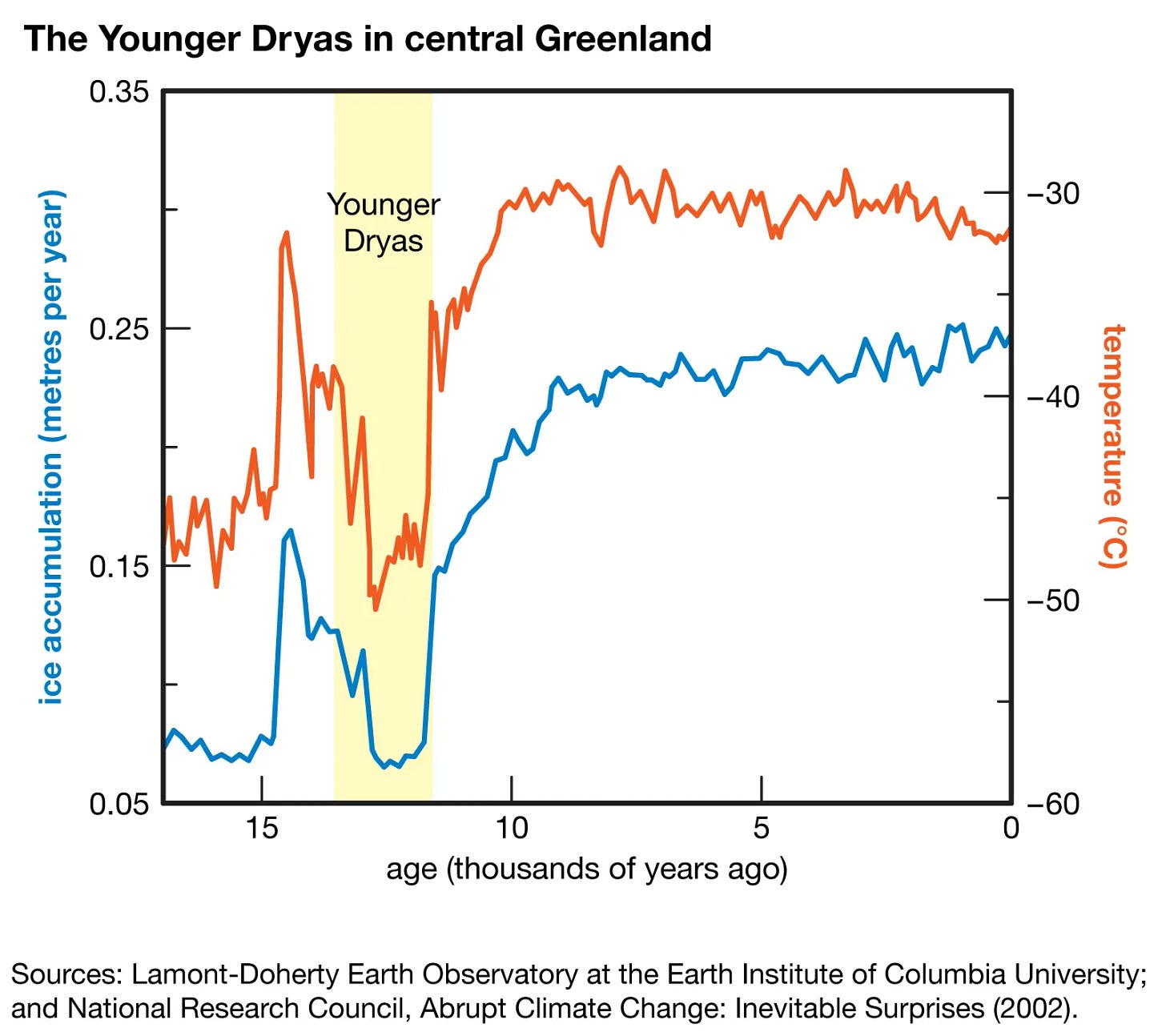What does the Younger Dryas tell us about humans ability to deal with climate change?
A discussion about a rapidly changing environment 12-13k years ago and what it tells us about humans ability to adapt to modern climate change.
The Younger Dryas period…
The Younger Dryas period was a sudden and severe cold snap that occurred around 12,800 years ago, at the end of the Pleistocene epoch. It is named after the Dryas octopetala, a cold-loving plant that flourished in Europe during this period.
The Younger Dryas period followed a long period of warming after the last ice age and lasted for approximately 1,300 years. During this time, temperatures dropped by as much as 10-12⁰ C (18-22⁰ F) within a decade in some regions, leading to the formation of glaciers in many places.
Source: https://www.britannica.com/science/Younger-Dryas-climate-interval
Global extent of the Younger Dryas…
The Younger Dryas was a global event, although its impacts varied in different regions of the world. Studies have shown that the impacts of the Younger Dryas were particularly pronounced in the Northern Hemisphere, where temperatures dropped the most and the period was marked by significant changes in vegetation and animal populations. However, there is evidence to suggest that the period also had impacts on the Southern Hemisphere, although these impacts were less severe.
The global nature of the Younger Dryas has been supported by a variety of evidence, including changes in ice core records, sediment records, and pollen records from around the world. These records indicate that the period was marked by abrupt and extreme changes in climate, which had significant impacts on ecosystems and human societies as described by Broecker (2003) who states:
Except for the Antarctic continent, everywhere on the globe where an adequate record has been obtained, conditions during the YD appear to have been more glacial-like than those characterizing the preceding Bölling-Allerød warm period. Summarized in Fig. 2 are sites where the YD has been documented and its onset adequately radiocarbon dated. In Antarctic ice cores, a marked departure is seen (11–13). In seven out of eight of these records, the YD is a time of pronounced warming. Those who favor the ocean-based scenario call on an alternation in the relative strengths of deepwater formation in the northern Atlantic and in the Southern Ocean as the cause for Antarctica's anomalous behavior. However, it must be stated that the record in the Taylor Dome core located near the margin of the Antarctic cap more closely resembles those from Greenland (14). The importance of this curious departure remains to be understood.
Source: https://www.science.org/doi/10.1126/science.1083797 and references therein.
Causes of the Younger Dryas…
Keep reading with a 7-day free trial
Subscribe to Irrational Fear to keep reading this post and get 7 days of free access to the full post archives.





